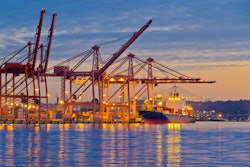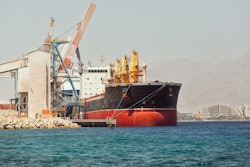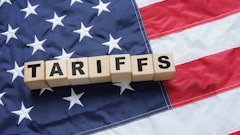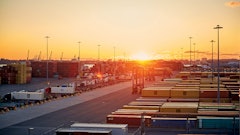
Supply chain professionals remain optimistic about container price hikes in January, citing tariffs, geopolitical risks, and structural overcapacity as their top concerns. These disruptions are expected to keep demand and supply dynamics volatile well into 2025, according to new insights released by Container xChange.
In fact, nearly 900 supply chain professionals from China surveyed indicate widespread optimism about price increases in January 2025, with 82% of respondents expecting container prices to rise in January, driven by persistent frontloading of orders ahead of Chinese New Year closures, geopolitical risks, and potential tariff escalations.
"Rising uncertainty and volatility will likely sustain container rates at elevated levels well into the Q1 of 2025. The data indicates similar holding up of rates in Vietnam, where the country is increasingly becoming a key stop along the China-U.S. trade route. Similar patterns exist in Mexico, highlighting shifts of trade flows to circumvent tariffs by leveraging trade-friendly nations with strong ties to the U.S,” says Christian Roeloffs, co-founder and CEO of Container xChange.
Key takeaways:
- Trump Tariffs implications, geopolitical risks and war implications, and structural overcapacity rank as key disruptions industry stakeholders are preparing for.
- Average prices for 40-foot-high cube cargo-worthy containers in China have been on a gradual decline in the recent months. However, a closer look at the last 24 months reveals a steady stabilization over the past six months following a period of sharp recovery earlier in the year. In 2023, prices remained relatively low and volatile, with averages ranging between $1,600-$2,140, reflecting subdued demand and market uncertainty. By the start of 2024, prices began to rebound steadily, driven by improving demand and increased frontloading of orders to mitigate potential disruptions.
- According to industry reports, over the past three years, the number of Chinese companies in Mexican industrial sites has doubled. However, President-elect Trump has threatened Mexico’s government with 25% tariffs.
- The growing tensions between U.S. port operators and labor unions add another layer of complexity for shippers, with the International Longshoremen’s Association (ILA) and the United States Maritime Alliance (USMX) yet to reach a tentative agreement before the Jan. 15, 2025 contract deadline.
“China’s economy is bracing for a slower pace of growth in 2025, as increasing trade tensions with the U.S. and domestic structural challenges weigh on its outlook. With U.S. tariffs likely to rise, we anticipate a decline in Chinese exports to the U.S., while trade flows pivot further toward emerging markets. However, stimulus measures could provide some relief, supporting infrastructure investment and domestic demand,” says Roeloffs. “For the global shipping industry, prolonged labor disputes and escalating tariffs present significant challenges for 2025. Stakeholders must prepare for a turbulent start to the year, as shifting trade routes and nearshoring trends reshape supply chains.”


![Pros To Know 2026 [color]](https://img.sdcexec.com/mindful/acbm/workspaces/default/uploads/2025/08/prostoknow-2026-color.mduFvhpgMk.png?auto=format%2Ccompress&bg=fff&fill-color=fff&fit=fill&h=100&q=70&w=100)







![Pros To Know 2026 [color]](https://img.sdcexec.com/mindful/acbm/workspaces/default/uploads/2025/08/prostoknow-2026-color.mduFvhpgMk.png?ar=16%3A9&auto=format%2Ccompress&bg=fff&fill-color=fff&fit=fill&h=135&q=70&w=240)








